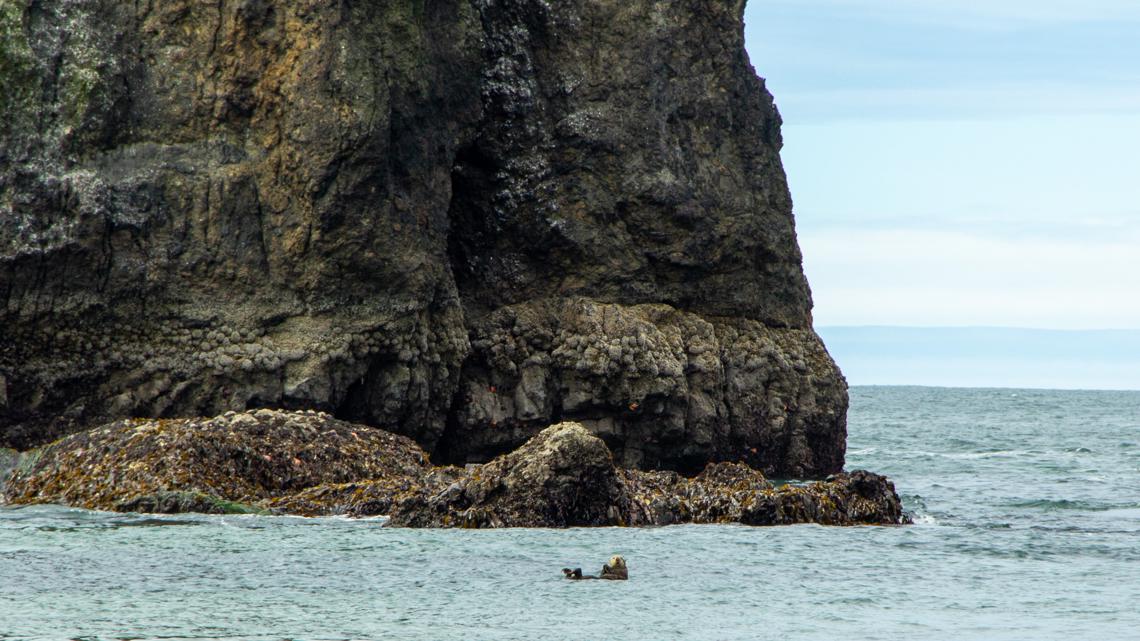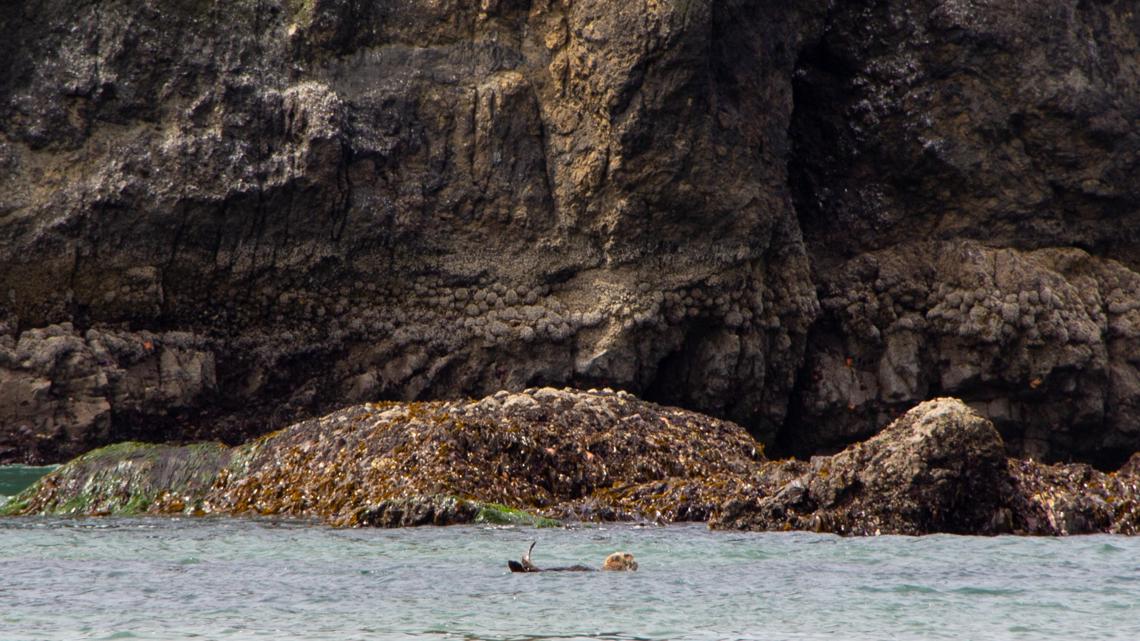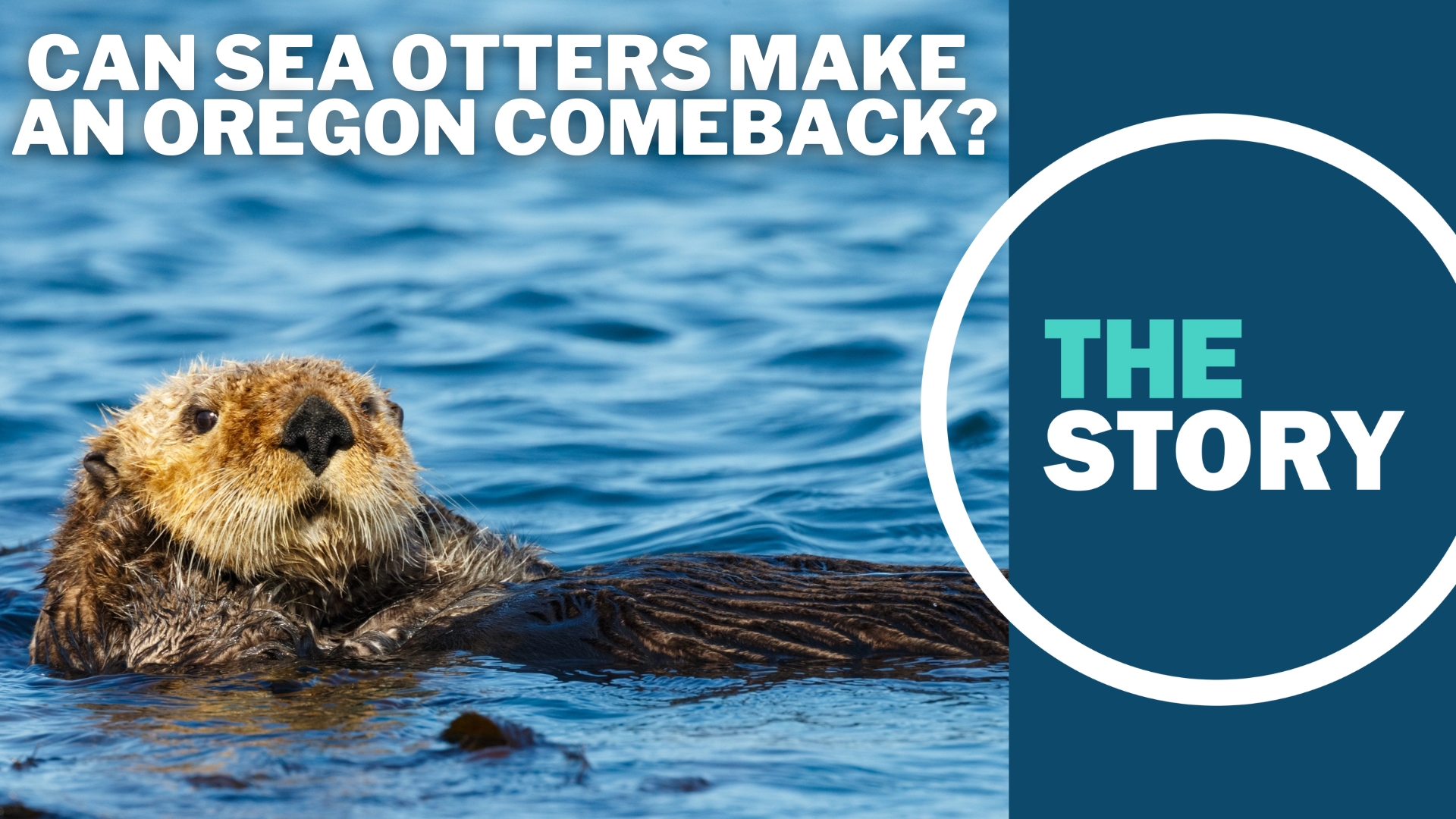CANNON BEACH, Ore. —
Chanel Hason gets a lot of false reports of sea otters on the Oregon Coast.
"I get email several times a month of someone saying they saw a sea otter running along the beach in Oregon somewhere,” said Hason. “It's very, very rare that it's actually a sea otter.”
So when she got an email in late June reporting a sea otter swimming in the waters off Ecola State Park, she responded like she always does.
“I was like, ‘Get a photo for me,’” Hason recalled. “As soon as she sent that email over with a scope photo of a cute little furry face, I was like, ‘Oh my god, that is an otter!’”


Hason is the director of outreach for the Elakha Alliance, a nonprofit that’s been working to reintroduce sea otters in Oregon 100 years after they were hunted to local extinction — not just because they are cute, which they are, but because their absence has caused an imbalance in coastal ecosystems.
Sea otters also play an important role in the history and culture of coastal tribes.
“In our stories and traditions, they're seen as a relative,” said Peter Hatch, a member of the Confederated Tribes of Siletz Indians and secretary of the Elakha Alliance. “They’re part of a web of interrelationships that are laid out in those stories that, in our view, create the abundance and the wealth of the lands and waters that we call home and love.”
Sea otters were once plentiful along the entire West Coast, from the Aleutian Islands in Alaska to Baja California in Mexico. Hatch explained that they were sustainably hunted for their fur by tribes since time immemorial.
“They're valued because it is the softest, richest, most beautiful fur that exists in nature,” he said.
That changed when Europeans began settling in the West.
“From the 1700s on, all along this coast, all the way up to Alaska, they were hunted for the commercial fur trade, which really exhausted their numbers — not just here, but on much of the West Coast,” Hatch said. “The last Oregon sea otter that we've been able to find a record of in our research was killed 12 years before my grandfather was born.”
Sea otters, or more specifically their absence, has had profound impacts on the marine environment, especially over the last decade, Hason explained.
Around 2014, sea stars began dying off along the West Coast, quickly dissolving into a gelatinous goo. What would come to be known as "sea star wasting disease" wreaked havoc on the sea star population.
One particularly hard-hit species was the sunflower sea star, which can grow up to 3 feet wide with more than two dozen arms.
“About 99% of the whole population was decimated and they haven't made a comeback,” Hason said.
That’s important because sunflower sea stars are voracious predators of purple sea urchins. Without sea stars to keep their numbers in check, purple urchin populations exploded.
The ripple effects continued from there in what wildlife biologists call a “trophic cascade.” Urchins feed on kelp, so as their numbers climbed, areas previously home to vast kelp forests were left with little more than a purple carpet of urchins.
It’s hard to overstate the importance of kelp to a healthy coastal ecosystem, Hason said.
“They're home to thousands of species of fish, invertebrates and marine mammals, from little harbor seals to big, enormous gray whales,” she said. “To see what some of those places now look like with urchin barrens is really devastating.”
Another species that frequently preys on purple sea urchins: sea otters.
Hatch said that restoring a healthy sea otter population would have provided a backstop to the loss of sea stars.
“Part of our hope behind our reintroduction would be putting in place another backstop that really should always have been there,” he said.
‘THERE ARE WINNERS AND LOSERS': OSU study finds low resilience to climate stressors among some Oregon coast ecosystems
There are some who have reservations about the reintroduction of sea otters, though. Hason said she’s encountered people in the fishing and crab industries who are hesitant about reintroducing a species that could potentially compete with them.
“We are working closely to have one-on-one conversations with these individuals and figure out what's the best way, if there's any negative implications, how to work that through,” she said.
The coastal tribes in Oregon are fully on board, however. In separate letters to U.S. Secretary of the Interior Deb Haaland, the Confederated Tribes of Siletz Indians and the Confederated Tribes of Coos, Lower Umpqua and Siuslaw Indians asking the federal government to prioritize the reintroduction effort.
“We feel strongly that the time has come to bring Xvlh-t’vsh back to Oregon,” tribal chairs Brad Kneaper and Delores Pigsley said in a joint statement, using the Dee-ni word for sea otters. They called on Haaland to “direct the (U.S. Fish and Wildlife Service) to prioritize returning sea otters to the Oregon Coast, set a timeline, prepare a plan, and take other steps necessary to pursue this act of environmental and cultural reconciliation.”
Hatch said it’s a matter of righting a historic wrong.
“Our work is kind of stitching together that torn fabric and bringing back this relative and this treasure of the Oregon Coast that we have lost,” he said.


And when she got a chance to see two sea otters frolicking on the Oregon Coast last month, Hason said it was a fleeting glimpse of what could be.
“It was a magical, historical moment, especially for me as someone who is working to restore our population,” she said. “It was like a glimmer of hope of exactly what we could see in the future here off of our coast.”

